Following 17 days of tense negotiations in Vienna, Iran, the 5+1 countries and EU’s High Representative Federica Mogherini reached a comprehensive conclusion, bringing to an end a 12-year ‘unnecessary crisis’ over Iran’s right to the peaceful nuclear program. Following the implementation of the deal, Iran expects release of its frozen assets. Now the question is how Iran will spend its billions when sanctions are lifted?
Even before the deal, there were wild speculations over how Iran would spend its post-sanction assets. Well before the agreement a Wall Street Journal report claimed that Iran had transferred millions of dollars to Hamas, to boost the Palestinian ‘terror group’s’ missile stocks and rebuild some of the ‘terror tunnels’ in the Gaza Strip which were destroyed during last summer Israel’s attack to Gaza.
After the deal, those on the opposition within the US Congress and from Israel began to exaggerate the value of the frozen money. Israeli PM Benjamin Netanyahu cited figures of $100 billion and more, claiming access to such large fund will increase Iran’s support for Hezbollah, Hamas and Assad and would boost “terror and war machine that threatens Israel and the entire world.” The Israeli ambassador has put the number at $150 billion. Foreign Policy estimated the figure at “north of $120 billion.” Critics like Republican presidential candidate Lindsey Graham, too, stated that the cash will allow Tehran to make bad situations in the Middle East even worse.
On the other hand, the US President Barak Obama and the US Treasury Department stated that Iran will have access to $100 billion after the IAEA verification of the implementation of measures under the agreement. Obama claimed that the Iranian people expect President Hassan Rouhani to use the sanctions lifting to improve the country’s economy and not helping its allies in the region.
Speculation about the figure and the way Iran will spend the money has social and political implications: on one hand the notion that Iran is receiving a momentarily huge ‘sanction relief’ is accentuated. On the other, concerns and skepticism about the ways Iran will spend the money is raised.
In reality the exact amount of the unfreezing assets is a matter of dispute. In response to such claims, Iran’s Central Bank Governor Valiollah Seif stated the figure that could be unlocked under a nuclear deal is $29 billion in overseas banks which is far less than reported estimates. Seif said the 100 billion figure included $35 billion which is already allocated to oil projects; a $22 billion that is held on security deposit guarantee in Chinese banks for buying goods; a $23 billion in foreign exchange which belongs to the bank and another $6 billion that is the government's money.
This money, which after all is Iran’s own money held in foreign banks, and not charity or ‘foreign aid’ from Western governments, will not flow to Iran overnight. Sanctions against Iran have created a complex web which will take a significant time to completely dismantle. With respect to financial system, it is believed that at least it will take three to five months to remove the ban following the implementation of the deal. Exaggerating the amount of Iran’s frozen assets and its swift availability will create high expectation among the public at large, making them believe that an economic miracle is on the way and if that miracle does not happen the government is to blame. This will also oversimplify Iran’s economic problems reducing it to reliance on ‘foreign aid’ ignoring domestic economic infrastructure, its capabilities and even mismanagements inside the country.
In addition, distorting and raising skepticism about the ways the Islamic Republic intends to spend and allocate the money is often brought up by opponents of the agreement. While adversaries to the deal claim that Iran will spend the post-sanction assets for its regional allies, recently a controversial CIA report was briefed to key members of Congress, predicting that Iran's government will pump most of an expected frozen asset into the country's economy and won't significantly boost funding its allies in the Middle East.
Iran, with a population of 80 million and a $400bn economy, seems a lucrative market for many European businesses and investors at time Europe is facing an economic crisis. European delegations are already flooding to Tehran, making very busy schedule of foreign trade investors for Iranian officials. Meanwhile, Iran has asserted that it will use the post-sanction assets on country’s infrastructure and is no longer interested in unidirectional importation of goods and machinery from Europe.
Sanctions or no sanctions, Iran makes no secret of the fact that it will continue its support for Palestinians in Gaza, Hezbollah in Lebanon, people of Yemen, and Syria and Iraq’s legitimate governments. Iran’s commitments in this regard are both strategic and moral. Iran has come to aid of Iraq, Syria, Afghanistan and Kurds when it was asked by their legitimate governments. Additionally, what Israeli regime or US Congress neo-conservatives call as ‘terror groups’ are considered as ‘resistant groups’ by the Islamic Republic that stand against Israeli occupation and massacre of tens of thousands of innocent civilians.
Dr. Zeinab Ghasemi Tari is an Iranian researcher and political analyst who holds a PhD in North American Studies.



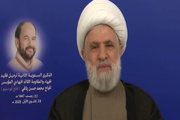
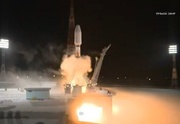
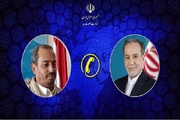

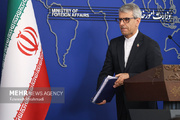

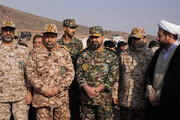
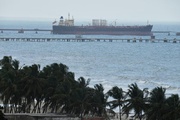

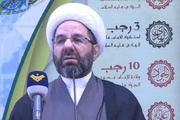













Your Comment